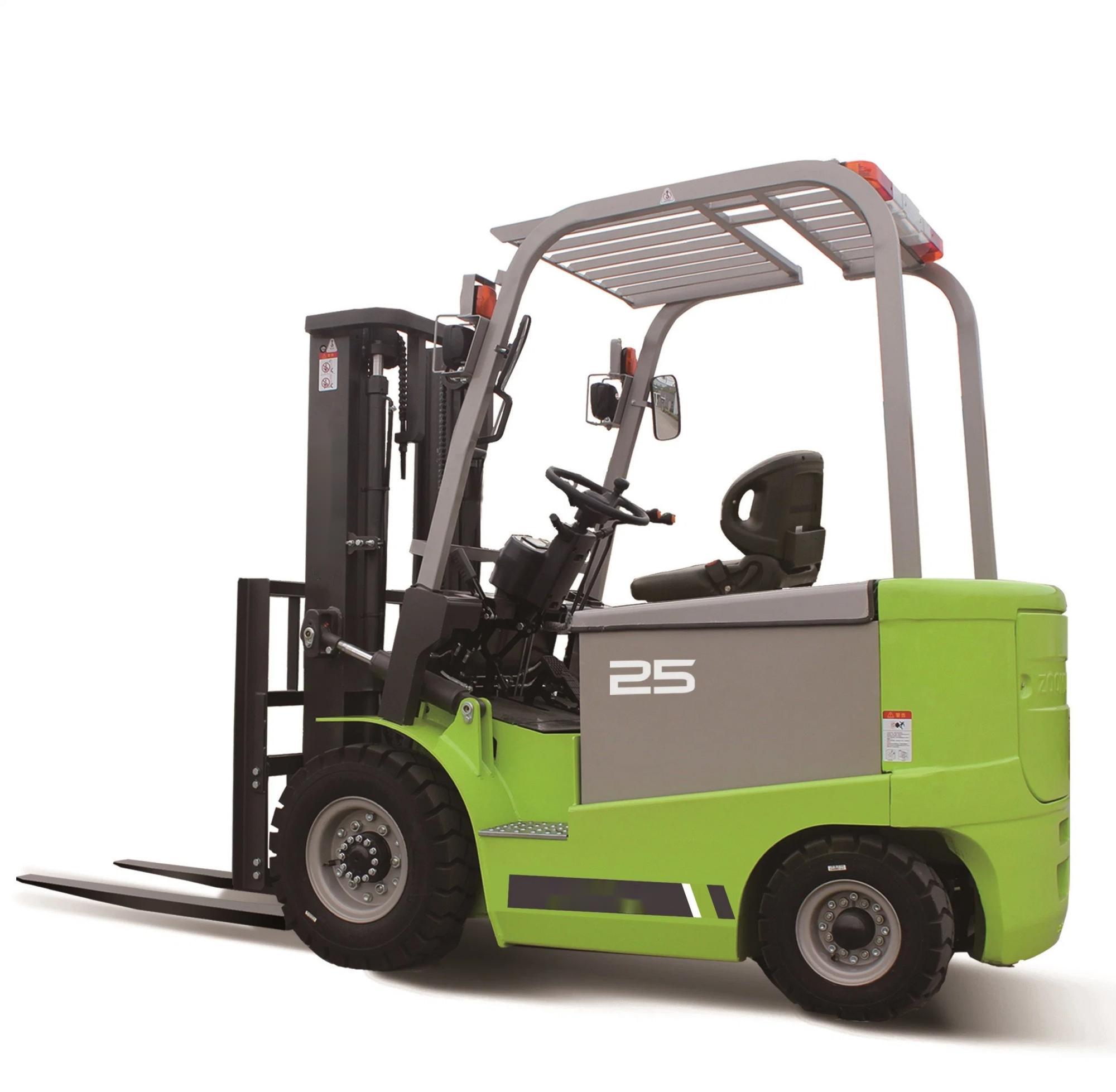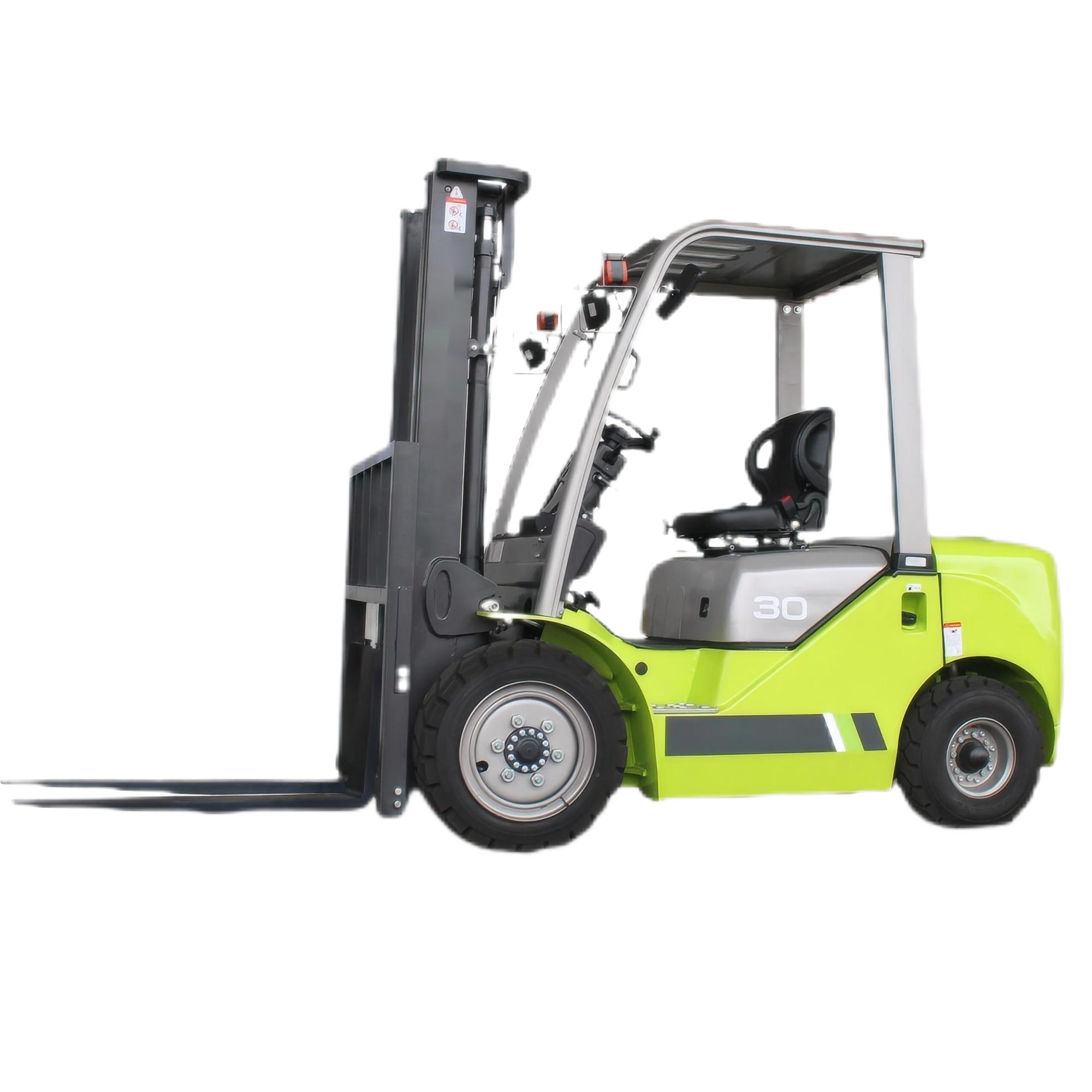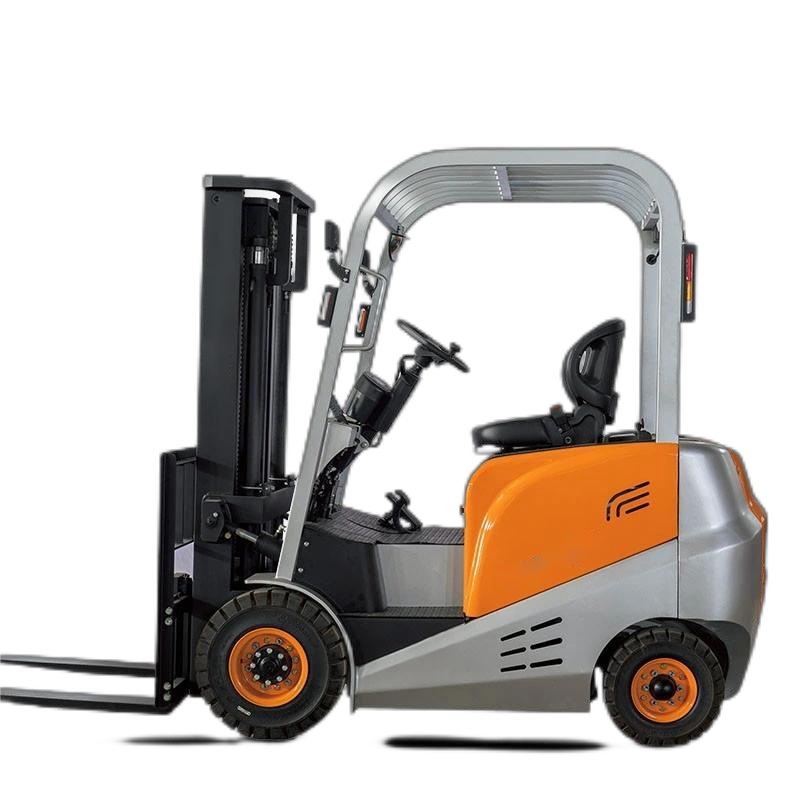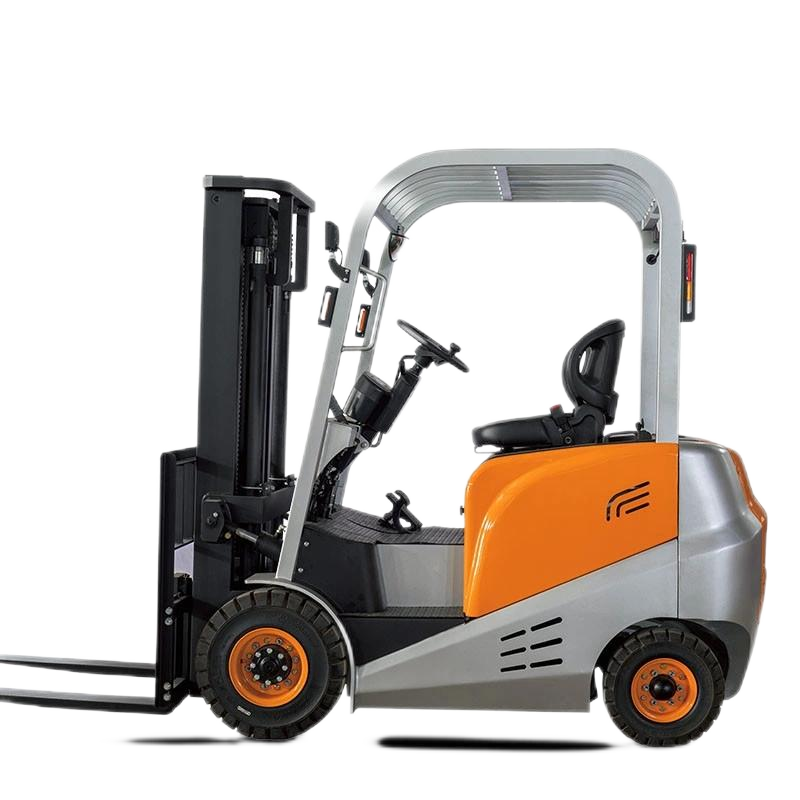Comparative Analysis of Three-point Electric Forklifts and Four-point Counterbalance Forklifts, carried out from the dimensions such as technical characteristics, applicable scenarios, and economic efficiency:

I. Comparison of Core Performance
Comparison Dimension Three-point Electric Forklift Four-point Counterbalance Forklift
Support Structure Three-point layout with 2 front wheels and 1 rear wheel Four-point layout with 2 front wheels and 2 rear wheels
Stability Coefficient Anti-rollover moment ≤ 2.8kN・m Anti-rollover moment ≥ 4.5kN・m
Maximum Load 1-2 tons (standard model) 1.5-5 tons (mainstream model)
Minimum Turning Radius 1.8-2.2m 2.5-3.5m
Climbing Ability 8-12% 15-20%
Battery Life 4-6 hours (continuous operation) 6-8 hours (continuous operation)
Comparison Dimension Three-point Electric Forklift Four-point Counterbalance Forklift
Support Structure Three-point layout with 2 front wheels and 1 rear wheel Four-point layout with 2 front wheels and 2 rear wheels
Stability Coefficient Anti-rollover moment ≤ 2.8kN・m Anti-rollover moment ≥ 4.5kN・m
Maximum Load 1-2 tons (standard model) 1.5-5 tons (mainstream model)
Minimum Turning Radius 1.8-2.2m 2.5-3.5m
Climbing Ability 8-12% 15-20%
Battery Life 4-6 hours (continuous operation) 6-8 hours (continuous operation)
II. Comparison of Technical Advantages
Three-point Forklift
Space Utilization Rate
Narrow Aisle Passability: Can complete a 90° turn within a 1.2m aisle (with side shift forks)
Vertical Stacking Efficiency: 15% higher than the four-point model
Handling Performance
Single Rear Wheel Steering: Steering response time ≤ 0.3 seconds
Fine Motion Control Precision: Low-speed stability at 0.05m/s
Energy Consumption Performance
Lightweight Design: The curb weight is 20% lighter than that of the four-point forklift of the same tonnage
Regenerative Braking System: The energy recovery rate reaches 25%
Four-point Forklift
Load Capacity
Dynamic Load Balance: Using the PID algorithm to adjust the center of gravity distribution in real time
Heavy Load Lifting Height: Can reach up to 8m at most (equipped with multi-stage cylinders)
Adaptability to Complex Working Conditions
Independent Suspension for All Wheels: Can adapt to a ground slope of ±10°
Off-road Tires Optional: Passability increased by 30% (unpaved road)
Safety Redundancy Design
Dual Braking System: Dual circuits of hydraulic braking + electromagnetic braking
Overload Protection: Automatically limit the speed when the load exceeds 90%
Three-point Forklift
Space Utilization Rate
Narrow Aisle Passability: Can complete a 90° turn within a 1.2m aisle (with side shift forks)
Vertical Stacking Efficiency: 15% higher than the four-point model
Handling Performance
Single Rear Wheel Steering: Steering response time ≤ 0.3 seconds
Fine Motion Control Precision: Low-speed stability at 0.05m/s
Energy Consumption Performance
Lightweight Design: The curb weight is 20% lighter than that of the four-point forklift of the same tonnage
Regenerative Braking System: The energy recovery rate reaches 25%
Four-point Forklift
Load Capacity
Dynamic Load Balance: Using the PID algorithm to adjust the center of gravity distribution in real time
Heavy Load Lifting Height: Can reach up to 8m at most (equipped with multi-stage cylinders)
Adaptability to Complex Working Conditions
Independent Suspension for All Wheels: Can adapt to a ground slope of ±10°
Off-road Tires Optional: Passability increased by 30% (unpaved road)
Safety Redundancy Design
Dual Braking System: Dual circuits of hydraulic braking + electromagnetic braking
Overload Protection: Automatically limit the speed when the load exceeds 90%
III. Life Cycle Cost
Three-point Forklift
Initial Cost: Low (15-20% lower than that of the four-point forklift)
Maintenance Cost: The annual maintenance cost is about 8% of the original value of the equipment
Battery Replacement Cycle: 2000 charge-discharge cycles (about 3 years)
Four-point Forklift
Initial Cost: High (including the counterweight system)
Maintenance Cost: The annual maintenance cost is about 12% of the original value of the equipment
Tire Replacement Cycle: 8000 hours (wear-resistant tires)
IV. Selection Suggestions
Choose a three-point forklift
Daily operation volume < 50 pallets
Aisle width ≤ 1.5m
Single piece weight of goods < 1.5 tons
Operation environment temperature > -10℃
Choose a four-point forklift
Daily operation volume > 100 pallets
Require cross-regional handling
Have the need for slope operation
Need to be compatible with various attachments (such as rotating forks, side shift forks).
Choose a three-point forklift
Daily operation volume < 50 pallets
Aisle width ≤ 1.5m
Single piece weight of goods < 1.5 tons
Operation environment temperature > -10℃
Choose a four-point forklift
Daily operation volume > 100 pallets
Require cross-regional handling
Have the need for slope operation
Need to be compatible with various attachments (such as rotating forks, side shift forks).








